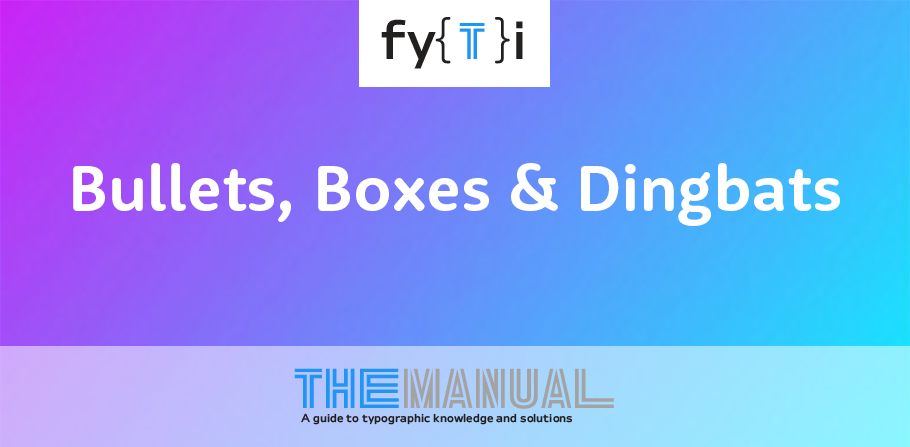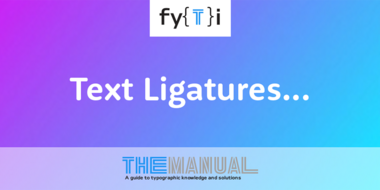Bullets Boxes and Dingbats Manual.

Sometimes letters are not enough. Perhaps you’ve tried changing “not-to-be-missed” text to bold or italic type, or even to a different face altogether, but it still doesn’t have the exact amount of emphasis you’re looking for. One simple solution to this typographic problem is to use a bullet, box, or dingbat.
Different Caliber of Typographic Bullets
This is one of the most subjective decisions you’ll have to make, regarding readability. The question, “What’s the right size to set type?” is roughly akin to, “How long is a piece of string?” It depends.
The right type size is appropriate to application and to reader. Informative material requiring sustained reading normally benefits from a larger type image. If your audience has to make an effort to read the copy – they won’t. Referential information (classifieds, box scores, etc.) can get away with considerably smaller type. This is because readers are predisposed to obtaining the information.
Box It
Boxes serve two purposes: to put things in, and to replace bullets. Like bullets, boxes come in two varieties. Open boxes are the kind found on reply cards, forms, and voting ballots; they’re designed to hold a check mark. Closed boxes can be found anywhere bullets are found, serving the same purposes – with just a bit more emphasis.
Dingbats
Optimum line space serves as a guideline for the eye. When there is too much line space, the eye must make conscious jumps between lines, slowing down the reading process. Too little line space creates dark, uninviting typographic “color” and undefined horizontal guidelines.
A general rule for achieving good line spacing is that it should be approximately 20% of the point size of the type being used. This is, however, just a rule-of-thumb. Heavy faces, and those with large lowercase x-heights, usually require a little more line space to avoid a dark page. Light typefaces, and those with long ascenders and descenders, can get away with less line spacing. And sans serif typefaces, because they do not have the benefit of serifs to guide the eye, generally need a little more line space than serif designs.
Straight Shooting With Bullets, Boxes and Dingbats
Below are some rules of thumb on how to use bullets, boxes and dingbats. Just remember, these typographic road signs should draw attention to the text they’re meant to emphasize – not to themselves.



















